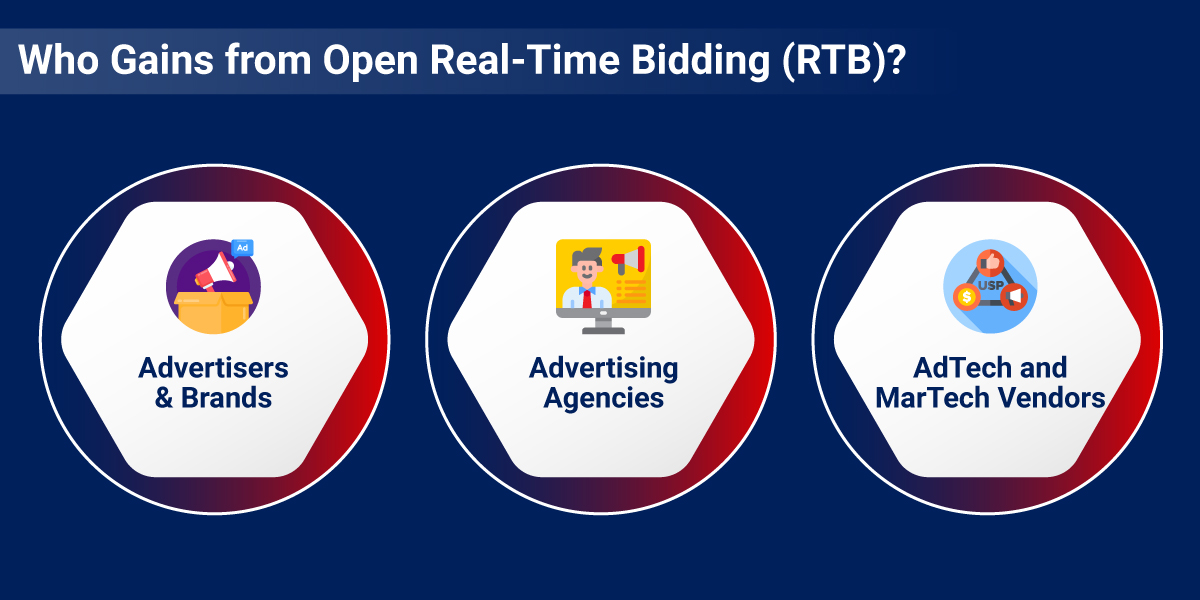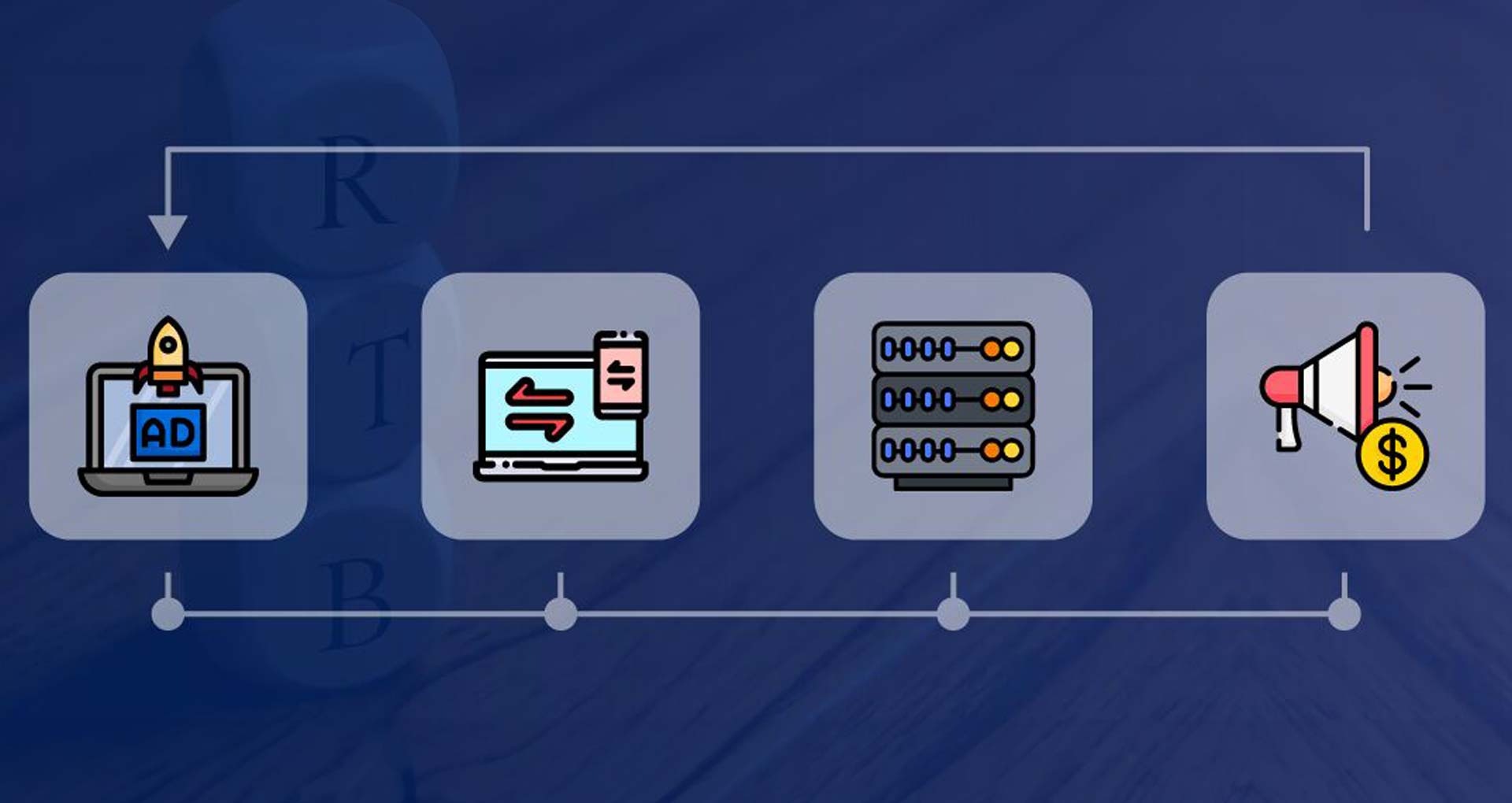The rapidly emerging RTB (real-time bidding) market in the programmatic advertising landscape caters to a more precise, controllable, and efficient ad selling and buying flow. According to eMarketer, this trend is expected to continue as programmatic ad spend is predicted to reach nearly $180 billion by 2025[1]. OpenRTB, which functions as the standard protocol enabling RTB to work seamlessly among programmatic entities, has further enhanced this environment. Key areas where this impact is observed include bidding behavior analysis and strategy optimization, ad inventory pricing and channel allocation, business model and mechanism design, as well as macroscopic market segmentation.
Are you in the pursuit of integrating Open RTB in your ad exchange marketplace? This blog covers all key aspects of Open real-time bidding, including what it is, its workflow, who can benefit, its capabilities, and best practices for implementation. So, let’s explore.
What is OpenRTB?
OpenRTB is a standard protocol within trading digital ad inventory that automates the end-to-end process by facilitating a real-time bidding marketplace. It provides an opportunity for advertisers and suppliers to tap into the ground of open communication throughout media buying. Open RTB integration is a widely used standardized protocol in the digital advertising ecosystem due to its ability to simplify the connection between suppliers of publisher ad inventory and competitive buyers of that inventory. The overall goal of OpenRTB is to make the integration between parties in the ecosystem easier so that innovation can happen at a deeper level.
It was developed by the Interactive Advertising Bureau[2] to smoothen the communication flow between ad exchange platform, DSP, and SSP. Do you know what OpenRTB standardizes? Bid requests and responses, Ad formats, Publisher and placement types, and Data definitions (geolocation, device information, and more).
How Does OpenRTB Work?
The Open RTB protocol operates under a systematic approach by connecting and communicating multiple components. Here is an image that demonstrates the working flow of OpenRTB:

Here are the steps with explanation:
- Whenever an end-user visits an ad platform (such as a website or mobile app), the ad server or supply-side platform becomes active and sends a bid request to an ad exchange. This request includes core information such as user details (demographics, preferences, browsing history) and ad inventory details (size, placement, ad type, minimum price floor, and others).
- In response to the bid request by the SSP, the ad exchange forwards it to all available demand-side platforms. DSP evaluates the request based on its attached information, and along with the bid request, it sends the bid price and the ad creative.
- Ad exchange with real-time bidding capabilities empowered by OpenRTB integration conducts online auctions. In order to grab the ad space, SSP and ad networks compete in the auction, and the highest bid wins the opportunity to display their ad to the users.
- Winner advertiser’s pack of ad creatives share using ad exchange to publisher platform.
- After displaying the ad, there is also an area where OpenRTB plays a major role: analytics and reporting. Providing standardized data formats and protocols that revolve around tracking and monitoring allows advertisers and publishers to be more data-centric in their approach to ad serving and displaying.
Who Benefits from Open Real-Time Bidding (RTB)?
AI in programmatic advertising automates ad transactions and ensures seamless execution across all touchpoints. Moreover, Open RTB integration and collaboration with other platforms like SSPs and DSPs can be even more beneficial, helping various entities reap the rewards

Advertisers and Brands
Brands, arguably, are the biggest winners of the Open real-time bidding ecosystem. OpenRTB allows advertisers to explore a wider range of ad inventories for better outcomes, and due to standardized protocol, advertisers can also quickly integrate with SSPs and DSPs. Additionally, hyper-targeting capabilities, enabled by Open RTB, give brands a higher conversion rate and allow them to build large audiences in a shorter time.
Advertising Agencies
Advertising agencies work for multiple brands simultaneously, so utilizing the OpenRTB protocol in their processes allows them to gain loyalty by delivering results. OpenRTB enables ad agencies to access diverse bidding opportunities, as the standard protocol opens up inventory worldwide.
AdTech and MarTech Vendors
For companies with a technology-based focus looking to revolutionize marketing and advertising industries with impactful solutions, OpenRTB integration can be a game changer. Sticking to the OpenRTB protocols allows the integration of products to fit the already established ad ecosystem systems. Tools that support OpenRTB become more interesting for clients seeking non-proprietary, non-MSS solutions and multivendor compatibility. Such an integration capability across different platforms and services further increases the appeal of the AdTech and MarTech vendors.
Role of Real-Time Bidding Capabilities
RTB capabilities make the foundation of programmatic advertising even stronger for advertisers (DSP) and publishers (SSP).
- RTB gives publishers and marketers the power to dynamically segment and refine their target audiences on the spot, ensuring maximum relevancy to reach the target audience.
- Advertisers can continuously fine-tune their campaigns using a wealth of collected real-time data. This includes page context, user behavior, time sensitivity, ad placement effectiveness, and comprehensive visitor profiles.
- RTB opens doors to globally available inventories, allowing advertisers to target expansive market segments beyond geographical restrictions. It also enables pinpoint targeting of high-value individuals. All this is achieved without the need for direct negotiations with media sellers, significantly streamlining the process.
- The robust data infrastructure and scalability of RTB enable advertisers to deliver highly personalized ad experiences to diverse users. This approach often leads to substantial improvements in conversion rates.
OpenRTB Implementation Best Practices
Here is a quick list of best practices to adopt while implementing OpenRTB in the advertising ecosystem:
- Implement Security Measures: Implement strong encryption and authentication methods within the RTB solution to keep data safer. Additionally, adopting a monitoring system can help in catching any weak spots.
- Focus on OpenRTB Specifications: One constant in the OpenRTB world is change. Stay updated on OpenRTB versions, new features, and add-on capabilities to stay ahead of the competition.
- Dynamic Optimization of the Platform: Just like the evolving and dynamic advertising market, Open Real-Time Bidding should be flexible. Regularly optimize activities such as setting minimum floor prices and adding new ad types to keep the platform evolving.
- Prioritize User Experience: Balance making money with keeping your targeted audience engaged. Improve their experience by setting up frequency capping.
- Focus on Scalability and Performance: As Open RTB integration expands over time, ensure your infrastructure can handle the growing bid requests. This includes managing the rising bid requests, as the OpenRTB ecosystem handles winning and losing impressions every millisecond.
How We Can Help You with OpenRTB Integration into Your Existing Ad Exchange Platform?
As a top-notch ad exchange solutions provider, we specialize in services for AdTech software development along with OpenRTB integration. Our AdTech experts offer comprehensive CTV programmatic solutions for seamless integration and customization of advertising platforms. Our expertise lies in designing, developing, and enhancing various AdTech platforms such as Supply-Side Platforms, Demand-Side Platforms, Data Management Platforms, Ad Networks, and many others.
Our expertise spans the entire Open RTB ecosystem, from building robust ad servers and header bidding platforms to implementing advanced analytics and fraud detection systems. Our AdTech team works closely to build a custom OpenRTB-compliant platform that is scalable, flexible, and optimized for ad performance.
Frequently Asked Question
Q: What are the differences between RTB and OpenRTB?
A: Here’s how these two are different:
- RTB: It is the process of buying and selling ad inventory. It can be closed and proprietary.
- OpenRTB: It is a standard protocol for implementing RTB. It is open-source and freely available for all.
Q: What are the different versions of OpenRTB?
A: Here’s a rundown on the OpenRTB versions:
- Current: OpenRTB v2.6 (released in September 2023[3])
- Previous: OpenRTB v2.5, v2.4, v2.3, v2.2, v2.1, v2.0, v1.0
Q: Why is OpenRTB essential?
A: OpenRTB is crucial for the following reasons:
- Open RTB increases effectiveness due to work automation in the sphere of ad buying and selling, which in turn minimizes the expenses of both buyers and sellers.
- The industry standard protocol is designed to create a certain standard for communication and data exchange between the ad tech platforms. It establishes compatibility, hence leveling the ground for all the players in the value chain.
Footnotes:
1. https://www.emarketer.com/content/programmatic-ad-spending-set-reach-nearly-180-billion-by-2025
2. https://www.iab.com/
3. https://iabtechlab.com/standards/openrtb/











 30 Min
30 Min


